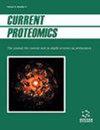不同季节的东方葫芦蛋白图谱分析有助于获得准确的水蛭疗法结果
IF 0.5
4区 生物学
Q4 BIOCHEMICAL RESEARCH METHODS
引用次数: 0
摘要
目的:几个世纪以来,水蛭疗法一直被用作治疗多种疾病的推荐方法,如牛皮癣、关节硬化、泌尿系统疾病和伤口愈合。本研究旨在分析药用水蛭蛋白质在不同季节和实验室条件下的数量、数量和分布差异。研究方法采用 SDS-PAGE 和二维电泳法对水蛭唾液腺分泌物中分子量在 5 - 250 KDa 之间的蛋白质进行分析。结果结果表明,水蛭唾液蛋白质的数量和质量在不同季节存在差异。我们观察到夏季的蛋白质数量高于冬季。这些结果表明,夏季存在钙蛋白和马尼拉酶,冬季存在透明质酸酶和胶原蛋白酶。结论这项研究可以帮助我们选择最佳和最有利的条件,利用东方鹅膏菌蛋白质治疗不同的疾病。本文章由计算机程序翻译,如有差异,请以英文原文为准。
Protein Profiling of Hirudo orientalis During Different Seasons for Obtaining Accurate Results in Leech Therapy
Leech therapy has been used for centuries as a recommended approach to cure several diseases, such as; psoriasis, arthrosclerosis, urinary tract diseases, and wound healing. The present study aimed to analyze the number, quantity, and distribution differences of medicinal leech (Hirudo orientalis) proteins throughout various seasons and in laboratory conditions as well. Protein profiling of salivary gland secretion from leech was studied by SDS-PAGE and 2D Electrophoresis on the proteins with the molecular weight range of 5 - 250 KDa in the lyophilized salivary gland secretion (SGS) during the seasons of summer and winter, and also in the laboratory conditions. Our results indicated differences in the number and quality of leech saliva proteins in different seasons. We observed a higher number of proteins in summer than in winter. These results demonstrated the presence of Calin and Manillase in summer and Hyaluronidase and Collagenase in winter. This study could help us in choosing the best and most favorable conditions for using H. orientalis proteins for the treatment of different diseases
求助全文
通过发布文献求助,成功后即可免费获取论文全文。
去求助
来源期刊

Current Proteomics
BIOCHEMICAL RESEARCH METHODS-BIOCHEMISTRY & MOLECULAR BIOLOGY
CiteScore
1.60
自引率
0.00%
发文量
25
审稿时长
>0 weeks
期刊介绍:
Research in the emerging field of proteomics is growing at an extremely rapid rate. The principal aim of Current Proteomics is to publish well-timed in-depth/mini review articles in this fast-expanding area on topics relevant and significant to the development of proteomics. Current Proteomics is an essential journal for everyone involved in proteomics and related fields in both academia and industry.
Current Proteomics publishes in-depth/mini review articles in all aspects of the fast-expanding field of proteomics. All areas of proteomics are covered together with the methodology, software, databases, technological advances and applications of proteomics, including functional proteomics. Diverse technologies covered include but are not limited to:
Protein separation and characterization techniques
2-D gel electrophoresis and image analysis
Techniques for protein expression profiling including mass spectrometry-based methods and algorithms for correlative database searching
Determination of co-translational and post- translational modification of proteins
Protein/peptide microarrays
Biomolecular interaction analysis
Analysis of protein complexes
Yeast two-hybrid projects
Protein-protein interaction (protein interactome) pathways and cell signaling networks
Systems biology
Proteome informatics (bioinformatics)
Knowledge integration and management tools
High-throughput protein structural studies (using mass spectrometry, nuclear magnetic resonance and X-ray crystallography)
High-throughput computational methods for protein 3-D structure as well as function determination
Robotics, nanotechnology, and microfluidics.
 求助内容:
求助内容: 应助结果提醒方式:
应助结果提醒方式:


